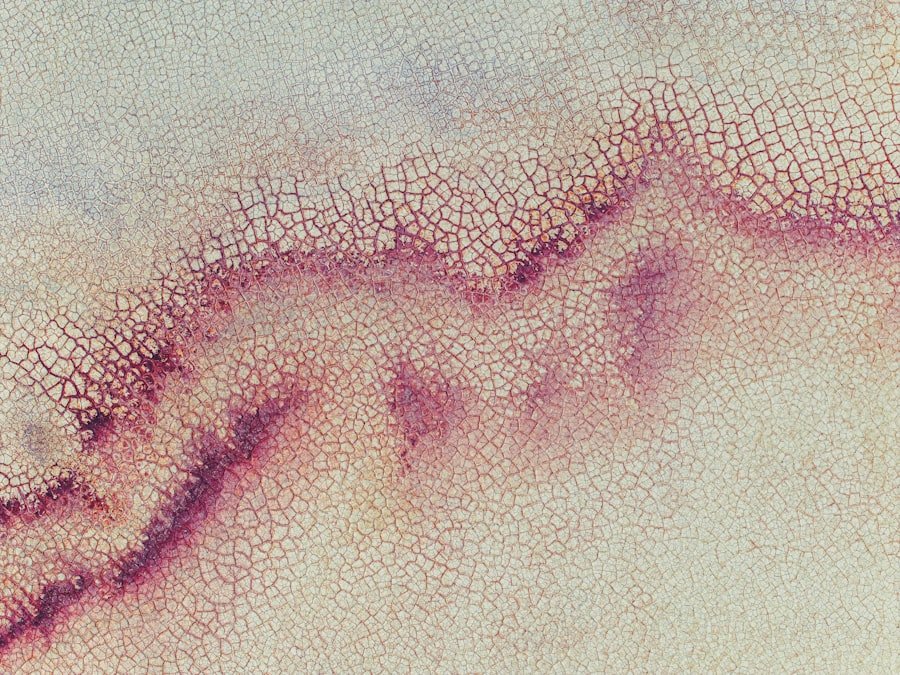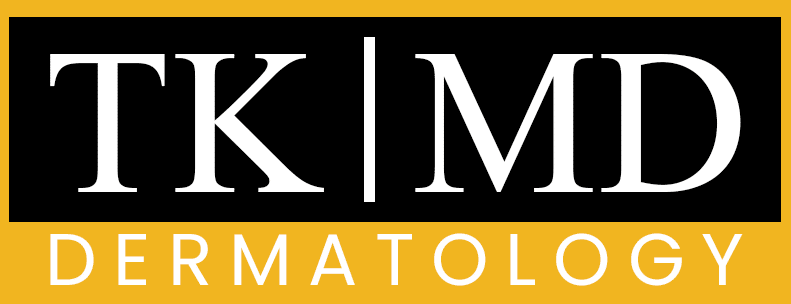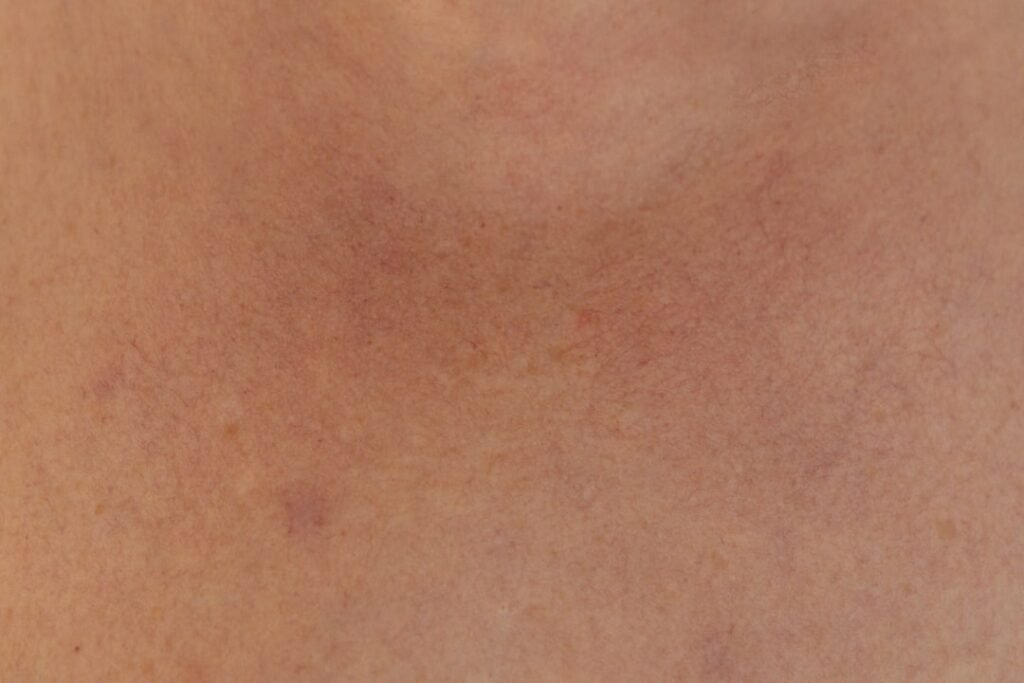Pimples are a common skin condition that affects individuals of all ages, often manifesting during adolescence but persisting into adulthood for many. They are a result of clogged pores, which can be caused by excess oil production, dead skin cells, and bacteria. Understanding the different types of pimples is crucial for effective treatment and management.
The most prevalent types include whiteheads, blackheads, and cystic acne, each with distinct characteristics and underlying causes. Whiteheads are small, raised bumps that appear on the skin’s surface, often characterized by a white or yellowish center. Blackheads, on the other hand, are open comedones that appear dark due to oxidation of the melanin in the clogged pore.
Cystic acne is a more severe form of acne that presents as painful, inflamed cysts beneath the skin. Each type requires a tailored approach to treatment, emphasizing the importance of recognizing their unique features and understanding their origins.
Key Takeaways
- Different types of pimples include whiteheads, blackheads, and cystic acne.
- Whiteheads are caused by clogged pores and can be treated with topical medications and proper skincare.
- Blackheads are also caused by clogged pores, but they are open and exposed to air, leading to their characteristic dark color. They can be treated with exfoliation and topical treatments.
- Cystic acne is a severe form of acne characterized by large, painful cysts under the skin. It often requires prescription medications and professional treatment.
- Preventing whiteheads and blackheads involves regular cleansing, exfoliation, and avoiding pore-clogging products.
Understanding Whiteheads: Causes and Treatment
Whiteheads occur when hair follicles become clogged with sebum, dead skin cells, and bacteria. This blockage prevents the pore from opening fully, leading to the formation of a small, closed bump on the skin’s surface. Hormonal fluctuations, particularly during puberty or menstrual cycles, can exacerbate oil production, making individuals more susceptible to whiteheads.
Additionally, certain skincare products that are comedogenic—meaning they clog pores—can contribute to their development. Treatment for whiteheads often begins with a consistent skincare routine that includes gentle cleansing and exfoliation. Over-the-counter products containing salicylic acid or benzoyl peroxide can be effective in reducing whiteheads by promoting cell turnover and targeting bacteria.
For persistent cases, dermatologists may recommend topical retinoids, which help to unclog pores and prevent new whiteheads from forming. In some instances, professional extraction by a licensed esthetician or dermatologist may be necessary to safely remove whiteheads without causing scarring.
Exploring Blackheads: How to Identify and Treat Them

Blackheads are a type of open comedo that forms when a hair follicle becomes clogged with oil and dead skin cells. Unlike whiteheads, blackheads remain open at the surface, allowing the contents to oxidize and turn dark. They are commonly found on the nose, forehead, and chin—areas known as the T-zone—where oil production tends to be higher.
Identifying blackheads is relatively straightforward; they appear as small black or dark brown spots on the skin. To treat blackheads effectively, it is essential to adopt a comprehensive skincare regimen. Regular exfoliation is key to preventing the buildup of dead skin cells that can lead to clogged pores.
Products containing alpha hydroxy acids (AHAs) or beta hydroxy acids (BHAs) can help dissolve the debris within pores. Additionally, clay masks can absorb excess oil and draw out impurities from the skin.
For more stubborn blackheads, professional treatments such as chemical peels or microdermabrasion may be beneficial in providing deeper exfoliation and promoting clearer skin.
The Severity of Cystic Acne: Symptoms and Treatment Options
| Severity Level | Symptoms | Treatment Options |
|---|---|---|
| Mild | Blackheads, whiteheads, few papules and pustules | Topical treatments, over-the-counter products |
| Moderate | Increased number of papules and pustules, some nodules | Prescription topical treatments, oral antibiotics |
| Severe | Large, painful nodules and cysts, widespread inflammation | Isotretinoin (Accutane), hormonal therapy, corticosteroid injections |
Cystic acne is one of the most severe forms of acne, characterized by large, painful cysts that form deep within the skin. These cysts are filled with pus and can lead to significant inflammation and scarring if not treated properly. Cystic acne often occurs in individuals with hormonal imbalances or those who have a family history of severe acne.
Symptoms may include painful lumps under the skin, redness, swelling, and in some cases, fever if an infection develops. Treatment options for cystic acne are more intensive than those for milder forms of acne. Dermatologists often prescribe oral medications such as isotretinoin, which is highly effective in reducing oil production and preventing future breakouts.
Hormonal treatments like birth control pills can also help regulate hormones that contribute to cystic acne in women. In addition to medication, procedures such as corticosteroid injections can provide immediate relief from inflammation and pain associated with cystic lesions. It is crucial for individuals suffering from cystic acne to work closely with a dermatologist to develop a personalized treatment plan that addresses their specific needs.
How to Prevent Whiteheads and Blackheads
Preventing whiteheads and blackheads involves a proactive approach to skincare that focuses on maintaining clean pores and balanced oil production. A daily cleansing routine using a gentle cleanser can help remove excess oil and impurities from the skin’s surface. It is advisable to cleanse twice daily—once in the morning and once before bed—to prevent buildup that can lead to clogged pores.
Incorporating non-comedogenic products into your skincare routine is essential for prevention. This includes moisturizers, sunscreens, and makeup that do not clog pores. Regular exfoliation is also vital; using chemical exfoliants like AHAs or BHAs can help slough off dead skin cells without being too abrasive on the skin.
Additionally, maintaining a healthy diet rich in antioxidants and omega-3 fatty acids can support overall skin health and reduce inflammation that may contribute to acne formation.
Managing Cystic Acne: Tips for Prevention and Treatment

Managing cystic acne requires a multifaceted approach that combines lifestyle changes with medical interventions. One of the most effective preventive measures is to avoid picking or squeezing cysts, as this can lead to further inflammation and scarring. Instead, individuals should focus on keeping their skin clean and hydrated while avoiding heavy makeup that can exacerbate breakouts.
In addition to topical treatments prescribed by dermatologists, lifestyle factors play a significant role in managing cystic acne. Stress management techniques such as yoga or meditation can help regulate hormones that trigger breakouts. Furthermore, maintaining a balanced diet low in refined sugars and dairy products may reduce inflammation and improve overall skin condition.
Regular follow-ups with a dermatologist are crucial for monitoring progress and adjusting treatment plans as necessary.
The Importance of Proper Skincare for Managing Pimples
Proper skincare is fundamental in managing pimples effectively. A well-structured skincare routine tailored to an individual’s specific skin type can significantly reduce the occurrence of breakouts. This routine should include cleansing, exfoliating, moisturizing, and sun protection as core components.
Cleansing helps remove dirt and excess oil, while exfoliation promotes cell turnover and prevents clogged pores. Moreover, using products formulated with active ingredients such as salicylic acid or retinoids can target existing pimples while preventing new ones from forming. It is also essential to choose non-comedogenic products that do not contribute to pore blockage.
Regularly updating one’s skincare routine based on seasonal changes or shifts in skin condition can further enhance its effectiveness in managing pimples.
Seeking Professional Help: When to Consult a Dermatologist for Pimple Management
While many individuals can manage mild cases of acne through over-the-counter treatments and proper skincare routines, there are instances when consulting a dermatologist becomes necessary. If pimples persist despite consistent home care or if they worsen over time, it may indicate an underlying issue that requires professional intervention. Additionally, individuals experiencing severe forms of acne such as cystic acne should seek dermatological advice promptly to prevent scarring and long-term skin damage.
A dermatologist can provide tailored treatment options based on an individual’s unique skin type and acne severity. They may recommend prescription medications or advanced treatments such as laser therapy or chemical peels that are not available over-the-counter. Early intervention by a professional can lead to more effective management of pimples and improve overall skin health significantly.
If you are struggling with acne scars, you may want to consider the best laser treatment options available. Dr. Trisha Khanna offers a variety of treatments to help improve the appearance of acne scars. Check out her article on the best laser treatment for acne scars to learn more about your options.
FAQs
What are the different types of pimples?
There are several types of pimples, including whiteheads, blackheads, papules, pustules, nodules, and cysts.
What is a whitehead?
A whitehead is a type of pimple that forms when a hair follicle becomes clogged with oil and dead skin cells. It appears as a small, white bump on the skin.
What is a blackhead?
A blackhead is a type of pimple that forms when a hair follicle becomes clogged with oil and dead skin cells. It appears as a small, dark bump on the skin.
What are papules and pustules?
Papules are small, red bumps that are typically tender to the touch, while pustules are similar in size but contain pus at their tips.
What are nodules and cysts?
Nodules and cysts are larger, more severe forms of pimples that develop deeper within the skin. They are often painful and can cause scarring if not treated properly.
What causes pimples to form?
Pimples form when the hair follicles on the skin become clogged with oil and dead skin cells. This can be caused by hormonal changes, genetics, certain medications, and other factors.


